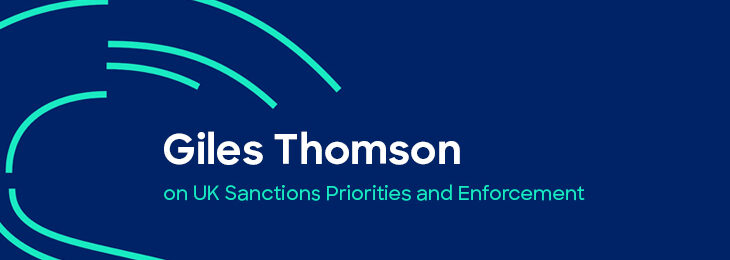
The daily routine of geniuses from various fields such as science, mathematics, art and literature are showcased in Mason Currey’s book, Daily Rituals: How Artists Work. The book is a collection of anecdotes from renowned authors who in some cases rose as early as three in the morning to hone their craft. Ernest Hemingway, Maya Angelou, Saul Bellow, Haruki Murakami and W. H. Auden were all early risers and began working shortly after waking up.1 They had their nocturnal counterparts who maintained similar routines but worked into the wee hours of the night. The through line is the consistency in the times worked. The authors felt these were the hours they could compose their best work and tackle narrative twists as well as character complexities.
These anecdotes should resonate with financial crime investigators. A strong suspicious activity report (SAR), particularly when dealing with a complex scenario, lays out the reasons the activity is suspicious and how the individuals involved in the transactions could be complicit. There is no shortage of complexities for investigators today; not only do they need to assess the activity, but they must always consider regulations, the unrelenting pace of technology and the means by which crooks exploit it. Scenarios in which both fraud and money laundering concerns are present are increasingly common and such situations can quickly spread into a myriad of accounts and subjects. Such cases pose an additional challenge: ownership. Generally, the full scope of the activity is not evident in any first assessment. An investigator will need to determine if it even belongs with them or with peers in a fraud or special investigations unit. Investigators can take a page from the aforenamed authors and use their own peak performance hours to tackle such situations without losing the ability to conclude less cumbersome tasks.
In corporate America, there is emphasis on time management and while helpful, much of it is devoted to managing one’s day with planners, checklists, etc. All well and good but what is generally omitted is any mention of when, specifically, to handle certain tasks. The authors in Currey’s book were likely set in their routines because this is when they were most focused. These were their peak production times. Peak times are determined by circadian rhythms. While no one is exactly the same, most people will reach peak focus/production time a few hours after waking up and will start to fade out in the afternoon.2 Cal Newport’s book Deep Work Rules For Focused Success in a Distracted World explores using peak performance at length. Newport shares the example of professor Adam Grant, from The Wharton School of the University of Pennsylvania, whose peak production times enabled him to generate high volumes of quality research consistently (as well as teaching and authoring a book).3
If most follow a “normal” rhythm, it should be fairly easy to gauge when a person is “in the zone.” The challenge is maintaining that focus during this period. Deep focus is improbable where there are recurrent pauses to respond to meetings, messages, etc. Daily corporate routines can feel designed to stymie any effort to focus for more than a few minutes. However, eliminating distractions in tandem with peak focus times is what enables optimal output. Newport states the following, “…when you switch from some Task A to another Task B, your attention doesn’t immediately follow—a residue of your attention remains stuck thinking about the original task...your attention remains divided for a while.”4
Depending on the company and the role, there is a good chance that blocking out all distractions for three to four hours is not an option. Nevertheless,
the following steps may be an effective way to harness peak performance time and manage a day filled with complexities as well as less taxing tasks.
- Have coffee and begin. Check inboxes for anything that will enable completion of projects previously marked as to review (i.e., pending additional details or documentation). Send any communications needed. Anything that can be completed, wrap it up. Those tasks are off the books and it will feel good knowing they have been completed.
- By now, investigators should be “in the zone.” Use the next few hours to tackle the heavy stuff and/or power through a series of less complex cases. For these peak periods, investigators should set themselves as “busy” or if possible “do not disturb.” Managers should try to create an environment where this is feasible. If investigators are not given the opportunity to focus, critical details will be lost.
- Lunch. Eat, if possible, go for a walk and get some fresh air. This has a reinvigorating effect.5
- Check back in, follow up with any correspondence and anything that did not require immediate attention. Afternoons are, for most, not ideal for deep focus production. Now is a good time to start new cases.
- Given focus may be at an ebb point, tacking new cases will give investigators the opportunity to do the basic first steps such as pulling or requesting documents and making preliminary assessments, nothing requiring too much effort. Investigators will now have a general understanding on which of these new cases will be simple knockouts or complicated headaches. It is probably best to avoid complicated cases at this point in the day.
- End of day. Conclude any possible cases and send any additional correspondence as needed. It is beneficial to create a game plan for the following day before finishing the work. Make this the last task before logging off; the subconscious will be processing the list and points related to it, which will hopefully produce some good ideas in the morning.6
It can often feel as if there are not enough hours in the day, and frequently, there are not. While hours cannot be added to the day, tackling the most challenging tasks when one is optimally geared to do so will help ensure everyone is maximizing their output during these limited hours without losing the quality of the content being produced.
Michael Cohen, CAMS, CFCI, CECFE, CCI, NC, USA, m.cohenCAMSCFCI@gmail.com
- Mason Currey, Daily Rituals: How Artists Work, (Knopf Publishing Group, 2013).
- Julie, “Maximize Your Time by Understanding Your Peak Working Hours,” Creative Circle, https://www.creativecircle.com/blog/understanding-peak-working-hours/
- Cal Newport, “Deep Work: The Secret to Achieving Peak Productivity,” KnowledgeWharton, January 12, 2016, https://knowledge.wharton.upenn.edu/article/deep-work-the-secret-to-achieving-peak-productivity/
- Ibid.
- C. Thøgersen‐Ntoumani et. al, “Changes in work affect in response to lunchtime walking in previously physically inactive employees: A randomized trial,” Wiley Online Library, January 6, 2015, https://onlinelibrary.wiley.com/doi/abs/10.1111/sms.12398
- “How unconscious processing improves decision-making,” ScienceDaily, February 6, 2013, https://www.sciencedaily.com/releases/2013/02/130213092305.htm











It is very important to know the rhythms of work and be aware of them, that allow us to make the most of time, which is inexorable and inelastic, an excellent article.
Es muy importante conocer los ritmos de trabajo y ser conscientes de ellos, que nos permitan sacar el mayor provecho del tiempo, que es inexorable e inelástico, excelente artículo.